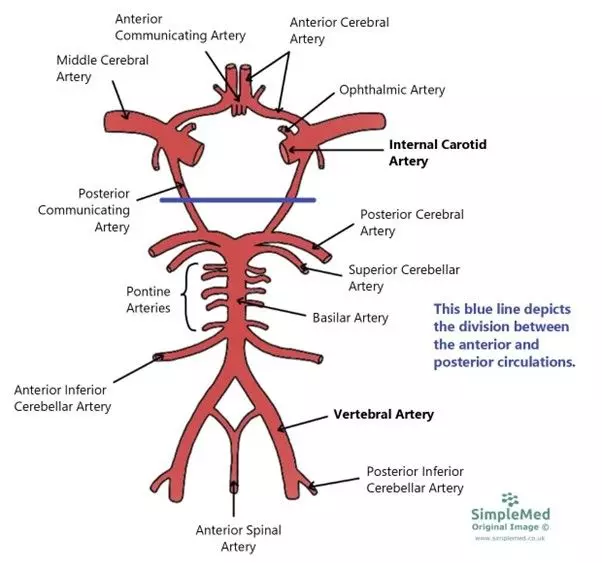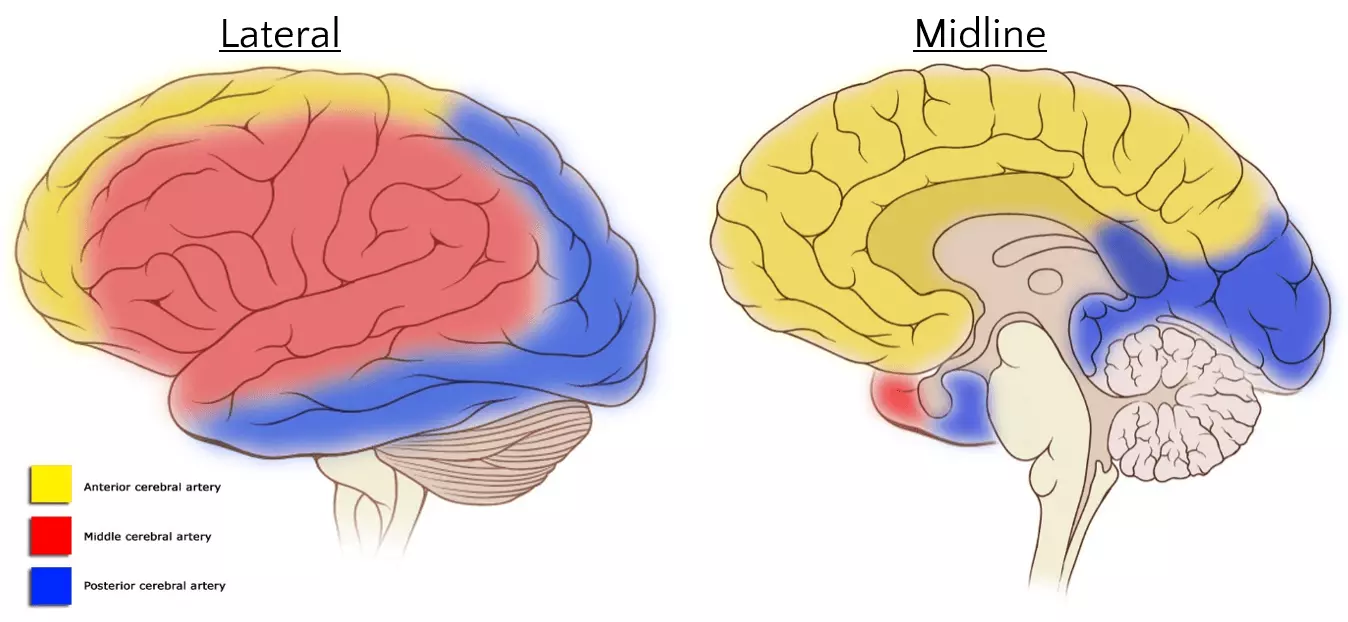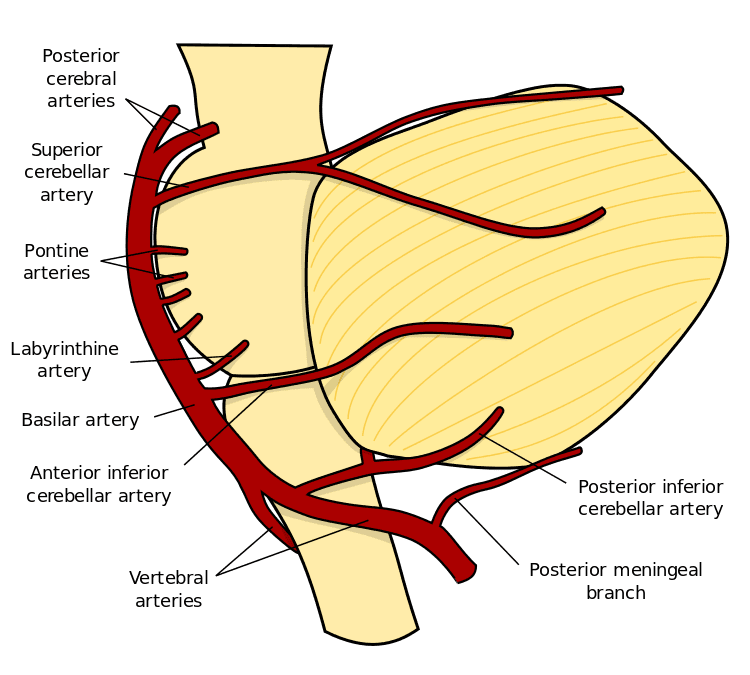Next Lesson - Development of the Nervous System
Abstract
- The brain has a very large demand for oxygen. Blood is supplied to fulfil this demand through two sets of arteries, the internal carotid arteries and the vertebral arteries. The Circle of Willis provides collateral circulation to the brain.
- The cortex of the brain is supplied by the anterior, middle and posterior cerebral arteries.
- The cerebellum is supplied by the anterior inferior, posterior inferior and superior cerebellar arteries.
Core
The brain is crucial to the functioning of the whole body, and to do this it must be supplied with a sufficient amount of oxygen to ensure it carries out tasks appropriately. It has a very large demand for oxygen and depravation could lead to ischaemic death of the tissue within minutes.
The arterial supply to the brain comes from two sets of arteries that originate in the neck and ascend to the brain: the internal carotid arteries and the vertebral arteries. They both supply blood to different areas of the brain: the internal carotids direct blood to the majority of the cerebral hemispheres (anterior circulation), while the vertebral arteries supply the occipital and part of the temporal lobes, the cerebellum, and the brainstem (posterior circulation).

Diagram - The outline of the arterial blood supply to the brain
SimpleMed original by Keertana Anne
The anterior and posterior circulations are connected by the posterior communicating arteries and the anastomoses of the vessels forms the Circle of Willis. This provides a collateral circulatory system to the cerebral blood supply, meaning if one of the arteries supplying the circle is blocked or narrowed cerebral perfusion can still be maintained, reducing the risk of ischaemia.
The internal carotid arteries originate from the common carotid arteries at the level of C4 (in the base of the neck). They enter the cranial cavity through the carotid canal, to give rise to the following arteries: anterior cerebral, middle cerebral, posterior communicating, and ophthalmic arteries.
The anterior cerebral arteries travel anteriorly in the brain and are connected in the midline by the anterior communicating artery. They then go on to supply the medial aspect of the frontal and parietal lobes, and loop backwards to supply the corpus callosum as well.
The middle cerebral arteries are a direct continuation of the internal carotid arteries, and supply the lateral aspect of the cerebral hemisphere. Once in the lateral cortex, the arteries split into two – the superior and inferior divisions. These divisions supply the lateral portion of the frontal and parietal lobes and the superior portion of the temporal lobes.
The lenticulostriate arteries branch off the middle cerebral artery before they divide and supply the lentiform nucleus, caudate nucleus, and the internal capsule. These structures make up the basal ganglia, which is very important in regulating motor function (see our article on the Motor System for more information).

Diagram - The regional blood supply of the anterior, middle and posterior cerebral arteries
Creative commons source by Dr Frank Gaillard and source by Dr Frank Gaillard, edited by Keertana Anne [CC BY-SA 4.0 (https://creativecommons.org/licenses/by-sa/4.0)]
The vertebral arteries originate from the subclavian arteries on either side and ascend superiorly through the transverse foramen of the cervical vertebra. The anterior spinal artery branches off the vertebral artery and travels inferiorly to supply the spinal cord.
The posterior cerebral arteries originate from the posterior circulation, unlike the anterior and middle cerebral arteries. They supply the occipital lobes, the inferior surface of the temporal lobes and the thalamus.
The blood supply to the cerebellum originates from the vertebral arteries and the basilar artery (formed from the confluence of the vertebral arteries and found at the base of the pons). The branches of that supply the cerebellum include the anterior and posterior inferior cerebellar arteries, and the superior cerebellar arteries.
Each of the cerebellar arteries supply the region of the cerebellum that they are named for (e.g. the superior cerebellar artery supplies the superior region of the cerebellum). Due to the pathway the arteries travel along, they are also able to supply regions of the midbrain ‘en passant’ (meaning in passing). Occlusion of these arteries cause specific cerebellar signs, further highlighted in our article on Movement Disorders.
The pontine arteries that branch directly off the basilar artery supply the pons, damage to which can cause locked-in syndrome, a very rare condition involving the loss of motor control of all muscles of the body apart from eye movements.

Diagram - The lateral view of part of the posterior circulation, including how each artery supplies the midbrain, pons and cerebellum
Creative commons source by Petit B [CC BY-SA 4.0 (https://creativecommons.org/licenses/by-sa/4.0)]
Edited by: Dr Maddie Swannack
Reviewed by: Dr Thomas Burnell

